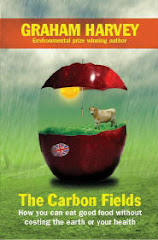
I’ll spare you the gory details. Let’s just say it’s not a good way to die. Dr Greger is Director of Public Health and Animal Agriculture for the Humane Society of the United States. He’s not one for over-statement. But in his talk in Washington DC he likened the possible impact of a bird flu plague to an Indian Ocean tsunami striking every town and city in the world.
He quotes Dr Robert Webster – the world’s leading authority on bird flu – as saying: “We’ve never seen such an event since the time of the plagues.”
I don’t mind admitting I was scared by this DVD. But more than that, it made me angry. Because if this catastrophe happens it won’t be a natural disaster – it’ll be one of our own making. According to Dr Webster, we’ve created this threat by rearing chickens in their tens of thousands in factory like sheds.
In effect we’ve produced the ideal conditions for the emergence of a virus strain that could wipe out half the word’s population. By buying cheap chicken – and by allowing farmers to keep them that way – we collude in an experiment that could cost the lives of billions.
The cause of this threat is a moral bankruptcy in our treatment of animals. Our materialistic society produces food animals as if they were plastic mouldings on a factory production line. We need to treat animals better if we are to have a future on this planet.
We could make a start by letting then out of their sheds and cages, and putting them back on green pasture where they belong. That way we’d all be healthier and our children might have a future on this planet.
To read Dr Greger’s latest book – Bird Flu: A Virus of Our Own Hatching – visit www.BirdFluBook.org
Thank you to CIWF/Martin Usborne for the use of the pictures.
For further reading please follow the link to read a report from the CIWF on The Role of the Intensive Poultry Production Industry in the Spread of Avian Influenza








